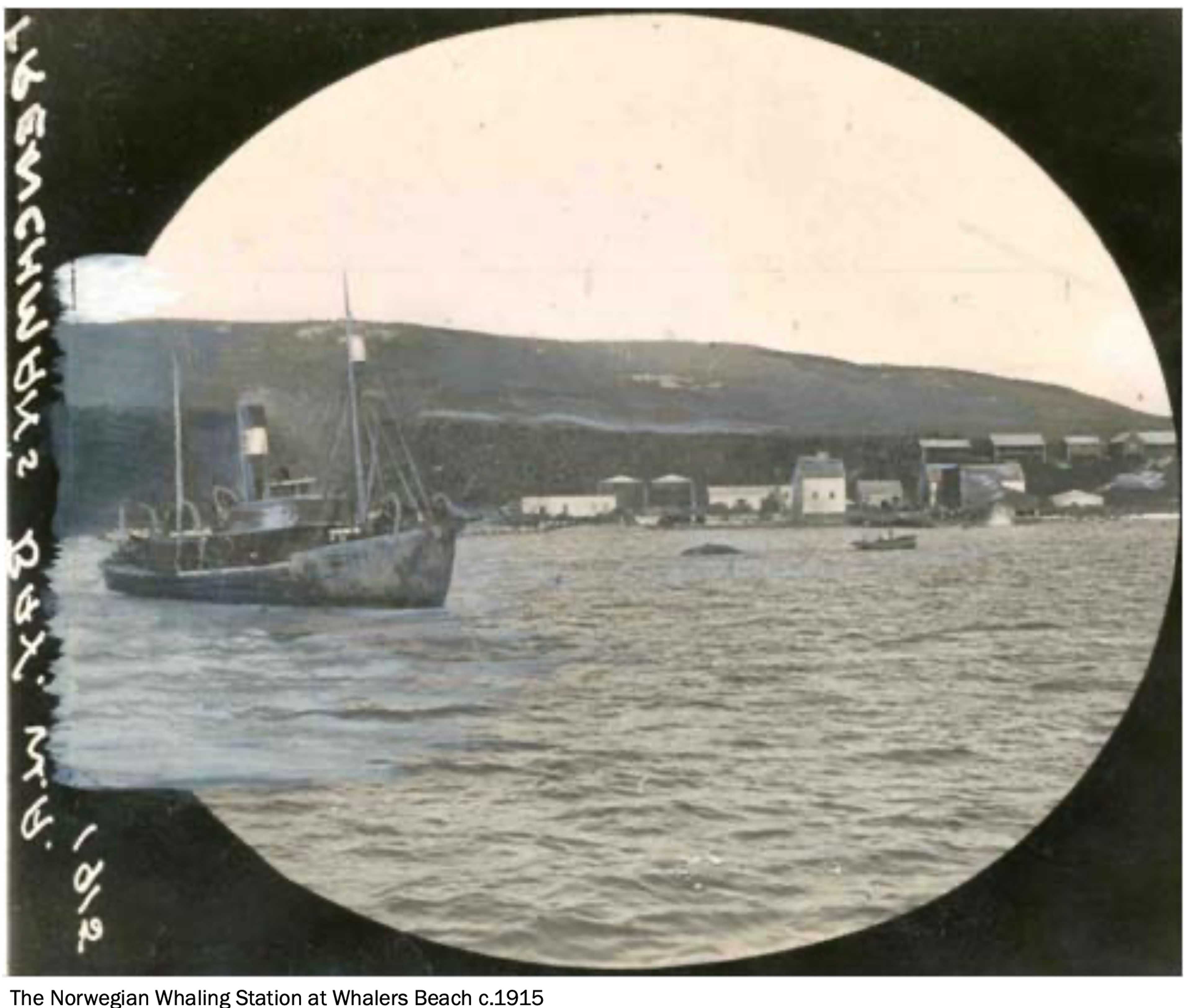Kristian (Christian) Flagstad
Vessel Name: Rakirua
Kristian (Christian) Flagstad
Death by breaking of a “toggle” causing a piece of whale flesh to fall upon him
5 June 1914

The Norwegian Whaling Station at Frenchman's Bay circa 1915
In 1911, Norway was searching for whaling grounds in the southern hemisphere. Western Australia was already well known for its history in whaling, especially along the South Coast.
On 1 January 1912, the State Government issued licenses to the Cape Leeuwin Whaling Company (renamed the Spermacet Whaling Company in November 1913). The licenses required investment in shore stations and restrictions were placed on processing onboard factory ships, allowing only processing for oil (whereas a shore station allowed the manufacture of guano, cattle fodder and bonemeal).
The Norwegians chose Frenchman Bay, near Albany, for their operations, as it had good access to a fresh water spring.
In the 1912 winter migratory season, the ships of the Spermacet Company assisted their sister Whaling Company to hunt humpbacks in the North West. They returned to Albany in October and began hunting sperm whales. During the 1912-13 summer, 205 sperm whales were processed on a factory ship, with a piece of ambergris discovered worth £4000.
By 1913, machinery began arriving in Frenchman’s Bay and the Frenchman Bay Whaling Station was built early in 1914 at a cost of £20,000 to £28,000. Local and imported material were used for the construction, and sadly, despite conservation efforts, very little evidence remains of the station.
When the station was in operation, the whale chasers towed the whales to the Station for treatment, but the presence of the factory ship Rakirua indicates that some processing was still occurring onboard the factory ship. The oil was stored in large wooden barrels and shipped back to Norway.
At 5:20pm on Friday 5 June 1914, a day before the Spermacet fleet left for Point Cloates, a 19-year-old deckhand named Kristian (Christian) Flagstad was killed when a one-ton piece of whale flesh fell on him while he was collecting oil from the deck of the factory ship, Rakirua, in Frenchman Bay.
On 8 June, an inquest was held, with evidence being taken by an interpreter from the crew of the ship.
According to Olaf Jorgensen, a deckhand onboard the ship, part of a whale head and flesh had been raised to a height of seven feet, with Flagstad and himself both underneath scraping up some oil on deck and putting it in a barrel. Flagstad remarked, “I hope this will be the last barrel we shall have to fill today.”
At that very same moment, Jorgensen noted a piece of the whale falling and jumped out of the way. He sang out to the deceased, but was too late. The piece of the whale in falling struck Flagstad on the right shoulder and forced him onto the bulwark and was killed instantly.
The cause of the accident was from the failure of the “toggle”, which was made of spruce pine timber. It had broken in the middle where the wire holding the whale was lashed onto it. The “toggle” was five inches in diameter and about 22 inches long and had only been in use for a day or two, with no reported defect in it.
These “toggles” could normally tolerate 2.5 to three tons of weight, and they were frequently replaced if showing signs of wear.
The second officer, Johan Anderson deposed that he had been on the Rakiura for three years and this was the first “toggle” he had seen fail. The faulty “toggle” was thrown overboard the next morning, as it was not thought important to keep.
Captain Niels Neilson reported Flagstad was a very willing worker, sober and steady. His funeral took place on the Sunday and was largely attended, including by the Mayor, Mr. H. Robinson.
Two more deaths occurred at Frenchman Bay Whaling Station. Chief Engineer Hans. P. Kittelsen died at age 40 on 24 November 1915, but no cause of death is recorded, and 44-year-old steward, Karl Adoff Nielsen, drowned two weeks later on 4 December while swimming at Frenchman Bay.
The operation would have been a lonely place for whalers, as there were no roads connecting Frenchman Bay to Albany at the time. Workers were described as “clean, young men”, and most of their wages would have gone back to Norway.
The operation of the station and its vessels did boost the local economy, with a reported £80,000 spent on provisions, coal and general supplies in 1915 alone.
The Frenchman Bay Whaling Station operation was short-lived. During its period of operation from 1912 to 1916, the Spermacet Company took 1,125 whales, produced 1.2 million gallons of oil and 730 tons of fertiliser. It had marked a new era of whaling with technological advancements, such as steam-powered ships and machinery, and the use of explosive harpoons that increased industry effectiveness and safety.
By December 1915, Spermacet decided to close down their operation. The diminishing size of the sperm whale catch made the operation economically unfeasible, and the War created suspicions that the whalers were sympathisers of Germany.
Boilers and equipment were relocated to a new station at Point Cloates, but the buildings were left behind.
In 1923, the Douglas family successfully tendered to purchase the site. The younger family members searched for “lost treasure”; the ambergris that was reputed to have been buried somewhere at the site. It was not found, but a lot of coal, timber and whale manure was salvaged, which was sold in Albany.
